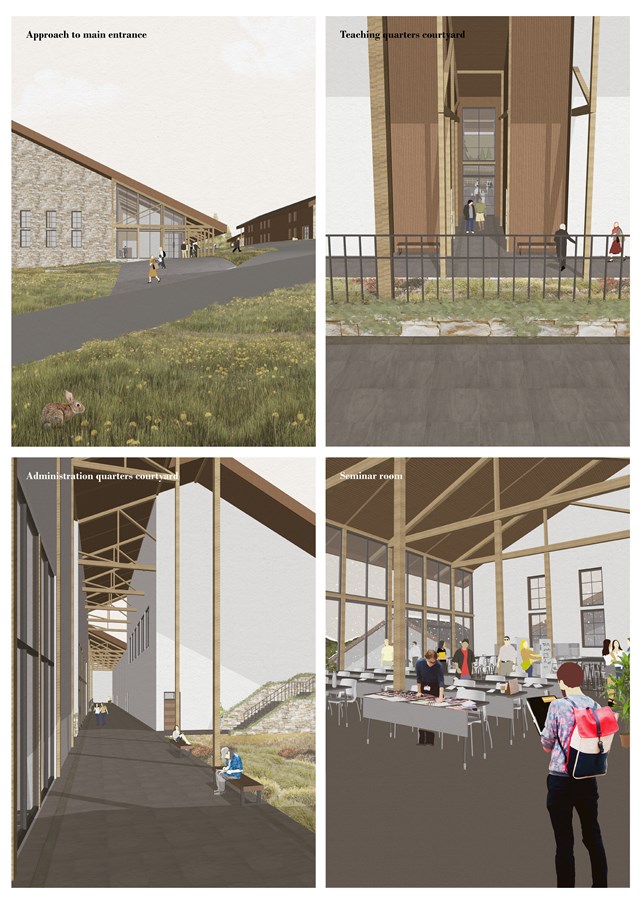Love of the Land:
Western Rhodopes Autonomous Region
This Year 5 thesis project is the culmination of my studies at Strathclyde since Year 1. I had the chance to situate a project outside of Scotland and explore some themes that I have a personal interest in.
The project stems from the problems of globalization and the exploitation of land and natural resources, as well as the effects of these on rural and under-developed communities. A case study is undertaken of the local community of the Rhodope Mountains in Bulgaria whose connection to their land has been threatened, thus affecting their land conservation practices and their chance for economic wellbeing.
The project explores a speculative scenario in which the Western Rhodope region gains territorial autonomy from the state of Bulgaria and the local population receive the power to govern their own land and resources through a form of participatory democracy. The Rhodope Council, an event held each autumn, becomes a tool for public decision-making through discussions and voting in six different sectors of land and resource policy. During the rest of the year at the same site in the village of Gela, an agrarian institute aids the locals through research and training in the fields of agriculture, resource management, and environmental protection, aiming to connect social, environmental, and economic sustainable development in the region. The agrarian institute works in the areas of crop rotation scheduling and pasture management practices and provides education programmes and consultancy services for a balanced approach that regards the wellbeing of the community and the land.

Autonomous region
All important sectors of the economy in the Western Rhodopes are connected directly to the land and its resources. Moving these resources under the jurisdiction of the Rhodope Council gives an opportunity to the local community to exercise its best judgment on their management, and to create a model of development that is both environmentally, socially and economically sustainable for themselves.

Programme for the Rhodope Council
The Council decides on policies and laws in six sectors related to the local land and resources: agriculture, forestry, water resources, fishing and hunting, extractable resources, and renewable energy. Between the end of October and the beginning of December, a week of events is dedicated to each of the six sectors. Eligible members of the community have the opportunity to discuss previous progress, suggest, workshop, and vote on their proposals for the development of the region

Site map of the village of Gela
The site of the Rhodope Council and the Agrarian Institute is the village of Gela. Tucked away deep into the mountains, it used to be the site of a traditional gathering of local families

Agrarian institute floor plan
Two of the central economic sectors of the Rhodopes - livestock breeding and crop growing - are organised around the change of the seasons and heavily rely on being in sync with the land. Alongside the autumn programme of the Rhodope Council, the Agrarian Institute provides year-round activity in the fields of agriculture and environmental protection through research and training.

Site axonometric
For the purposes of research and training, the Agrarian Institute has a flock of 45 sheep, pastures, and a model farm set up on site.

Seasonality of the building's programme
The functions of the Rhodope Council and the Agrarian Institute are determined by the seasonal rhythm of the land and resources. Together they create a system where each component plays its role at a given time and supports the functions of the other components.

Pasture management approaches
The principles of rotational grazing rely on the pasture being broken into smaller cells (paddocks). Livestock is moved between cells when 50-70% of the cover has been removed. This reduces overgrazing beyond the point of the cover’s ability to regrow. The slope of the land allows the manure from the grazing sheep to be washed into swales, where rain fills up and spreads the nutrients down across the site. Food forests are planted below the swales and take up some of the nutrients to produce food and biomass.





